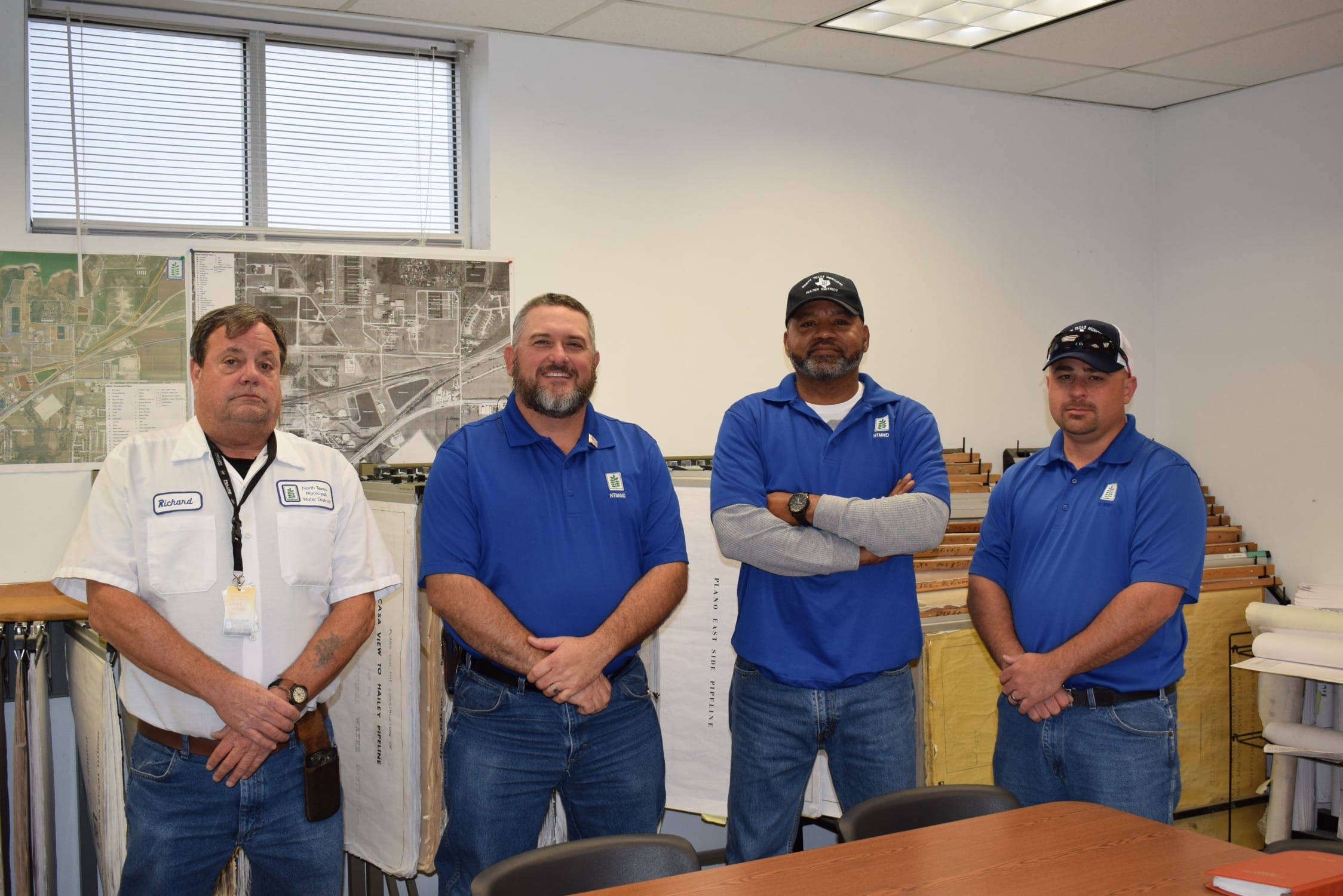It’s no secret that we live in one of the fastest-growing regions in the country. All that growth and expansion means lots of construction and digging in the communities we serve. But do you know what’s underground? NTMWD has more than 1000 miles of water and wastewater pipelines running across North Texas, and every day those pipelines are at risk. That’s why our line locates team works tirelessly to protect our lines, protect public safety, and prevent problems before they arise.
HIDDEN DANGERS UNDERGROUND
The line locates team exists to protect our infrastructure and the people on the job. Whether it’s a home builder adding a new development of homes, a farmer tilling his crops, or a homeowner adding a swimming pool, this team is our pipes’ first line of defense The team’s members work with contractors and cities to make sure that both our lines and those that intersect them are protected during development, construction projects or other ground disturbances. One mistake by a digger could mean costly repairs, environmental impacts, and even service shutdown for an entire town.
Figuring out where our miles of underground pipes are located is not the most intuitive process–it requires historical perspective and expertise. Our team not only knows the exact locations of our pipes, they know the depth, the curves, and even other hazards that may be underground nearby. Our pipes vary dramatically in size and in depth, ranging from 12 to 96 inches and depths as shallow as 18 inches or as great as 30 feet. However, the size of the pipe doesn’t necessarily correspond to the pipe’s depth. A 36-inch-diameter pipe could be buried between two houses or underneath a backyard only a few feet below the surface. This is why it is so important for our team to be notified before major underground projects begin.
DRIVING THE LINES
On an average day, our five-man team receives 40-50 calls and nearly 100 emails for requests to locate our lines. Many times, our professionals can verify the location of a water or wastewater line from memory or by consulting their maps or notes. When they do need to go into the field to verify a pipe’s location, team members don’t just take the quickest route – they drive along the route of the lines. While it may not be the fastest way to get there, this method gives team members a chance to see the lines and surroundings with their own eyes. Along the way, they may be able to spot a patch of green grass in a brown field alerting them to a leak, or a construction crew digging close to a line. When this happens, they stop to investigate or talk to the crew to find out what they are working on and show them where and how to avoid our lines.
CALL BEFORE YOU DIG
So how can you know what’s underground before you dig? Many utilities are part of the 811 Call Before You Dig system that helps identify lines for water, wastewater, electrical, gas, communications and more. NTMWD is not part of 811 system –that’s why we depend on the cities we serve to let people know to contact us. We also rely heavily on personal relationships with contractors, residents and business owners.
So why not just rely on modern technology like sophisticated mapping from our geographic information systems (GIS) teams? Not all of our pipes have been mapped by GIS. While this process is in progress, it will take time to get our entire system mapped with new technology to improve our efficiency. In the meantime, we will continue to build relationships with residents, contractors, and our cities to make sure they know to always call NTMWD directly before digging.
For NTMWD line locates service, please call 469-626-4569 or email locates@ntmwd.com.
Team lead Richard Johnson has been with NTMWD for 19 years and locating lines for 10 years. Ray Sikes has 21 years of service and nine years locating lines. Eric Daughtry has been locating for two years and has six years with the District. Jeremy McGahan has been locating for 12 years, the past four of those with NTMWD.

